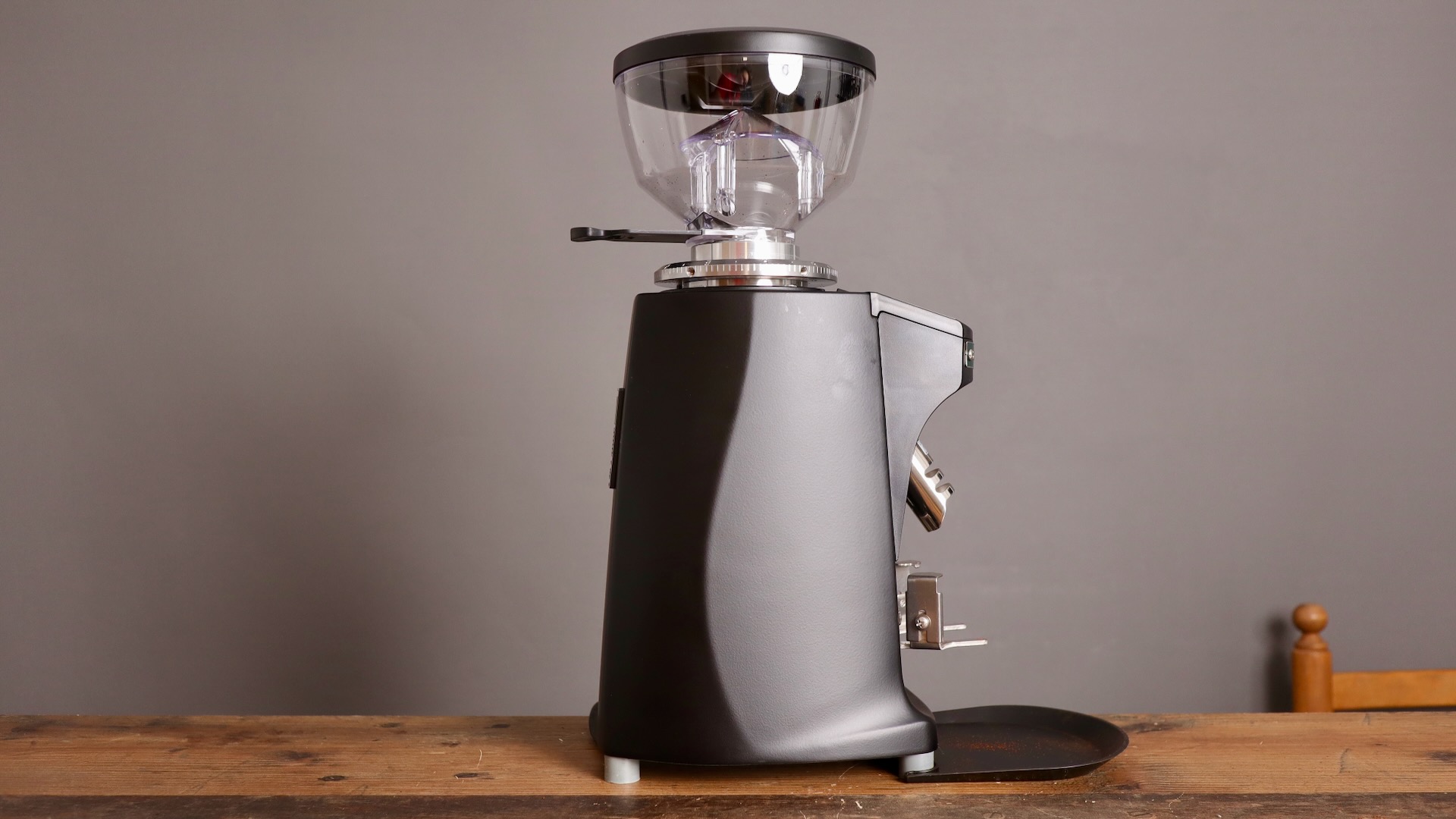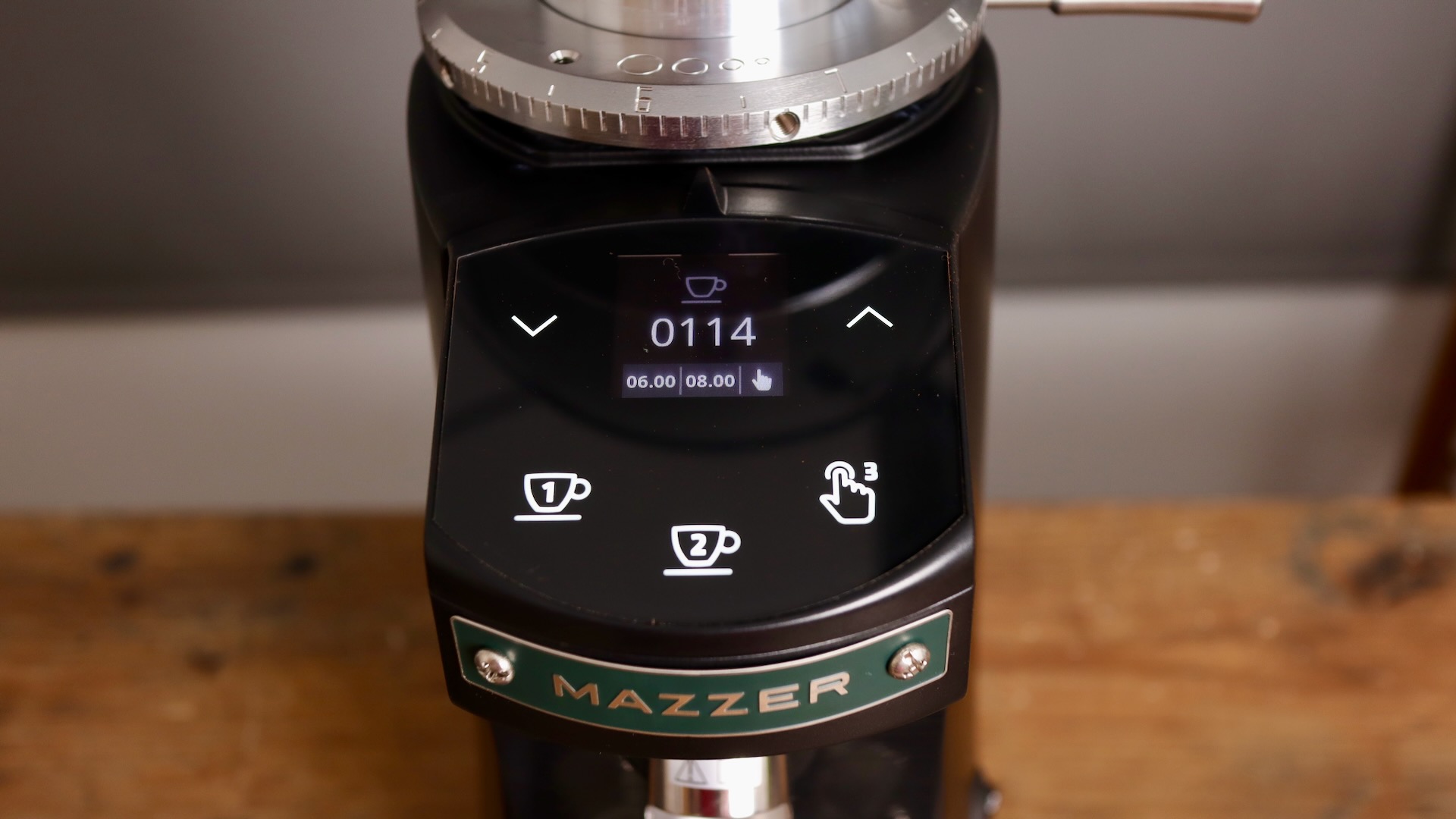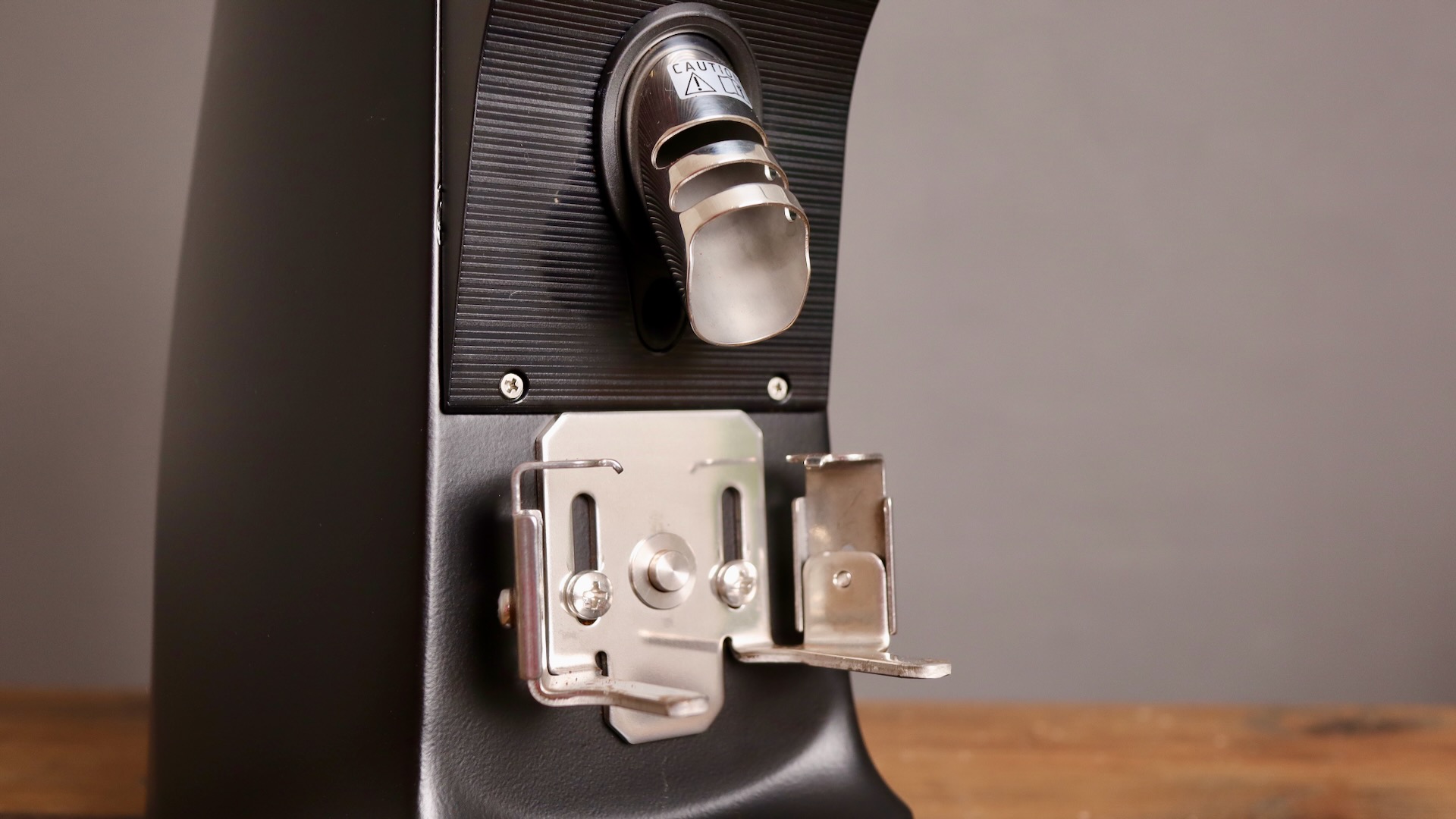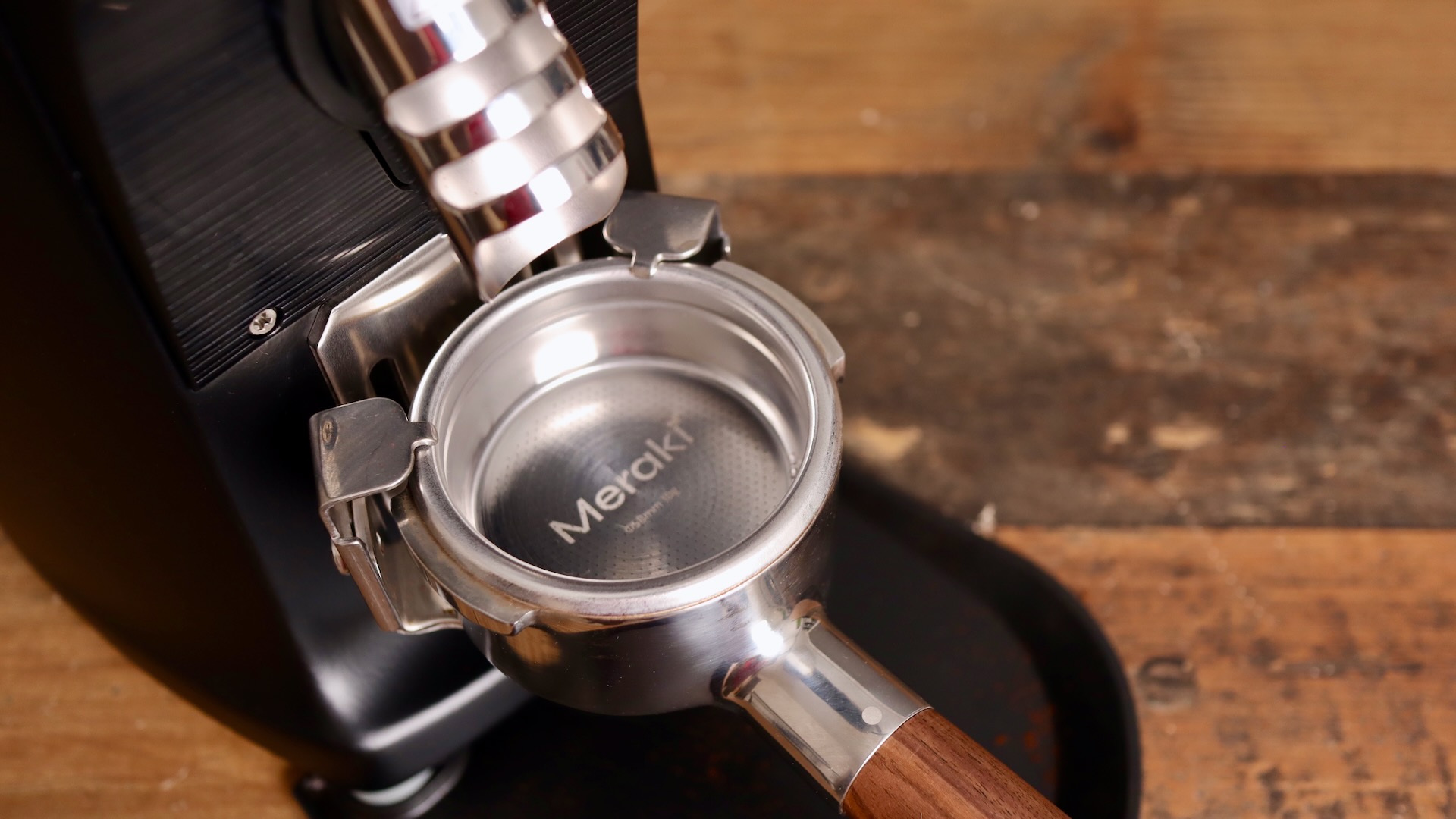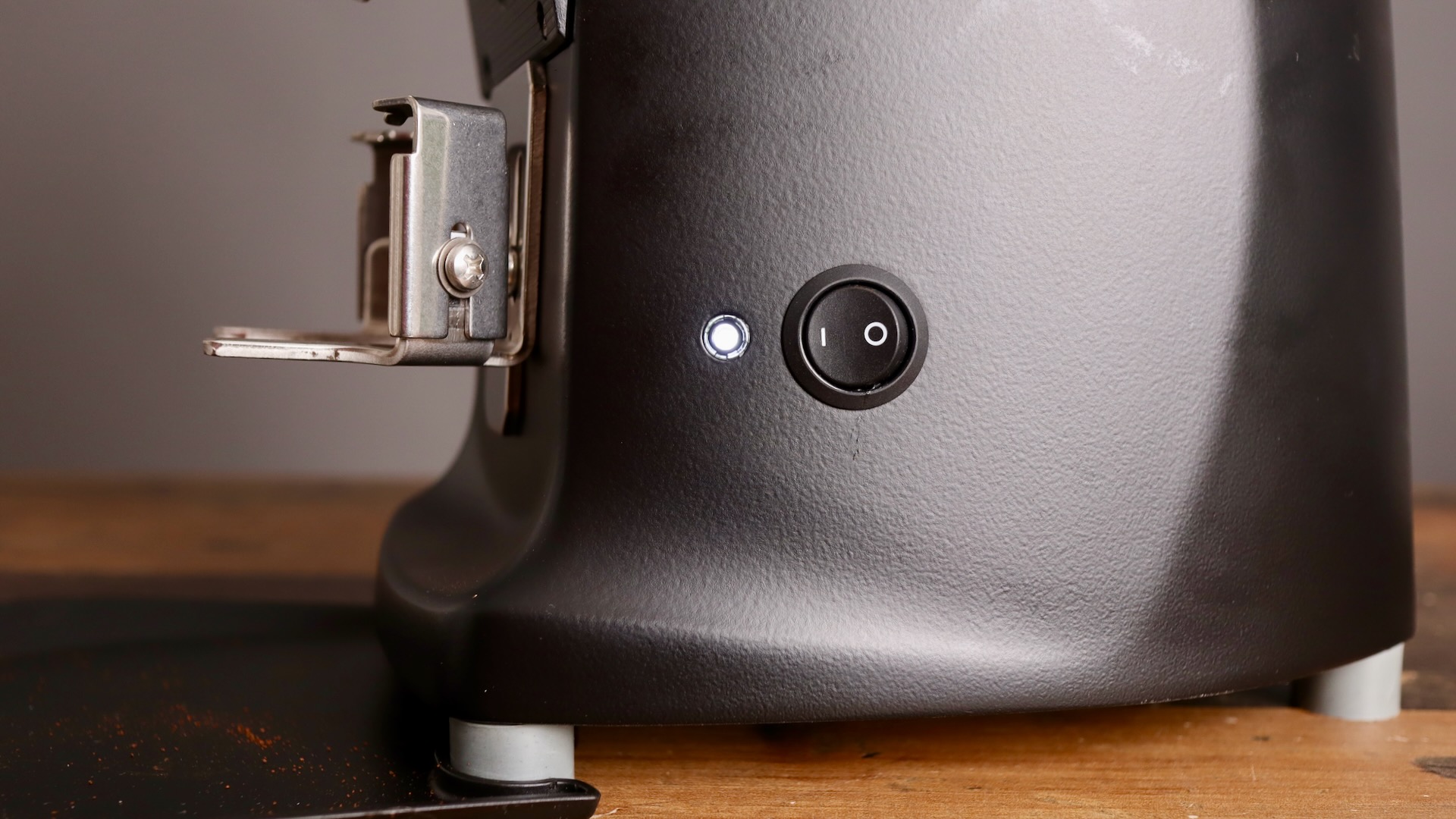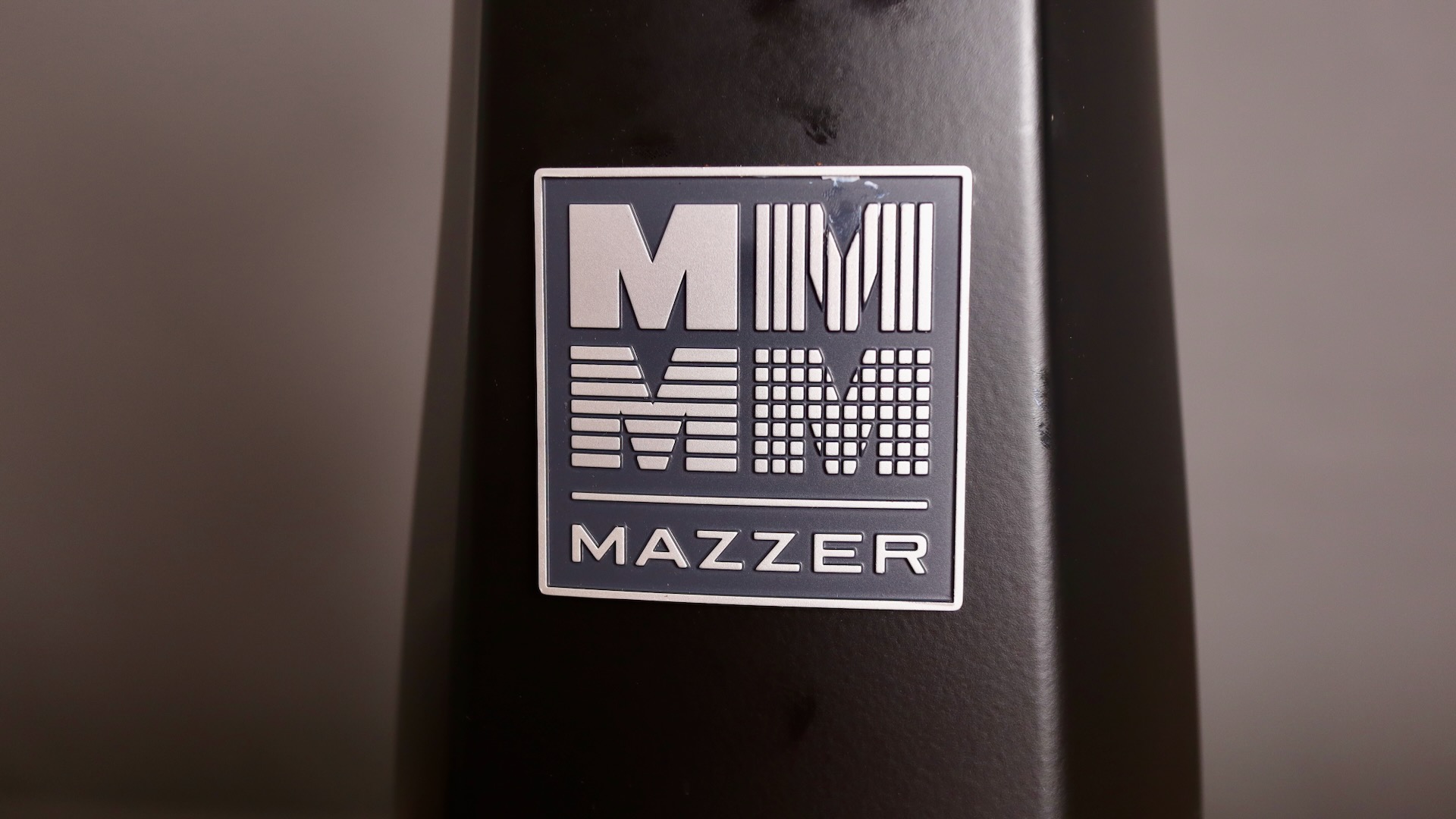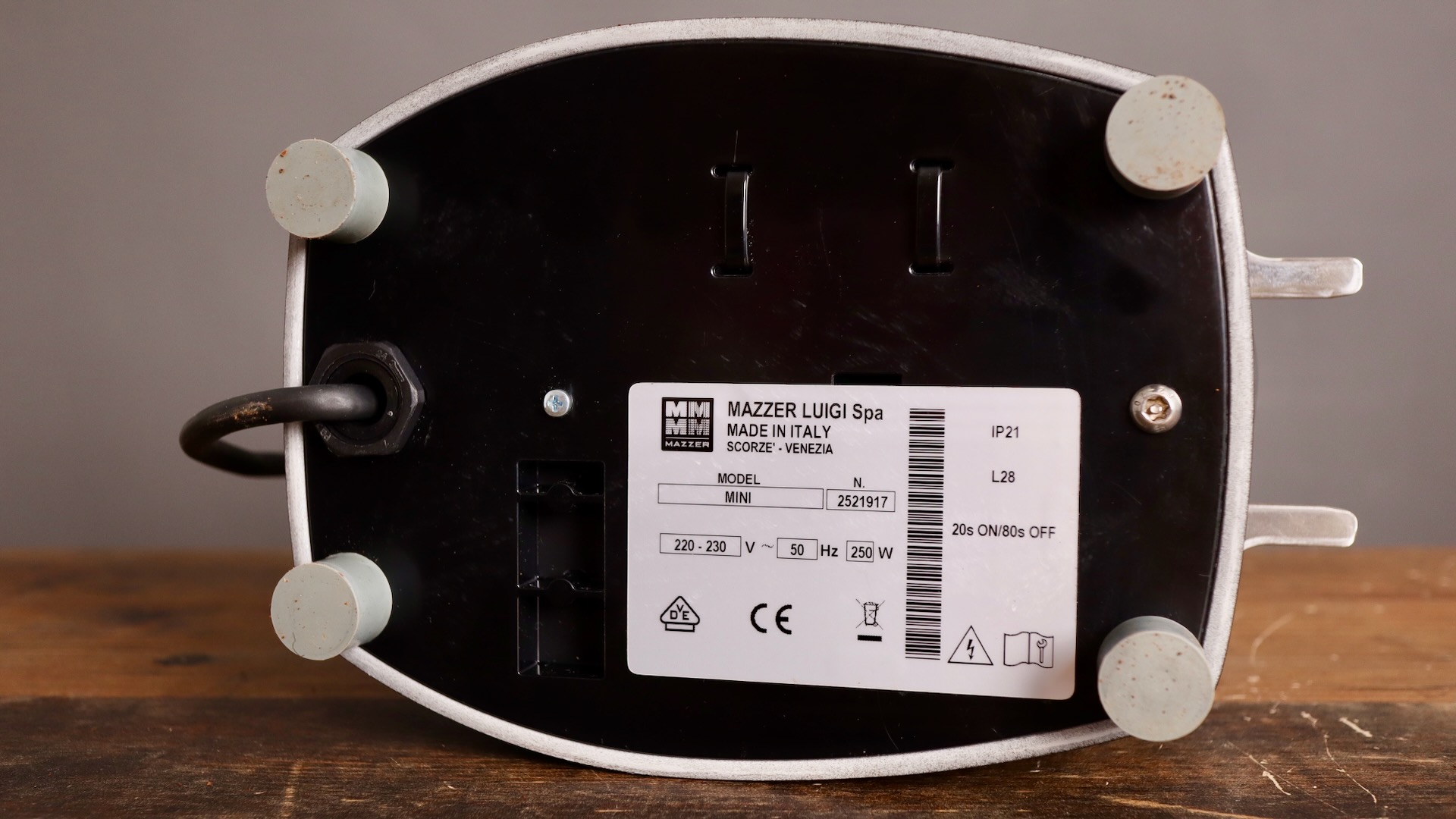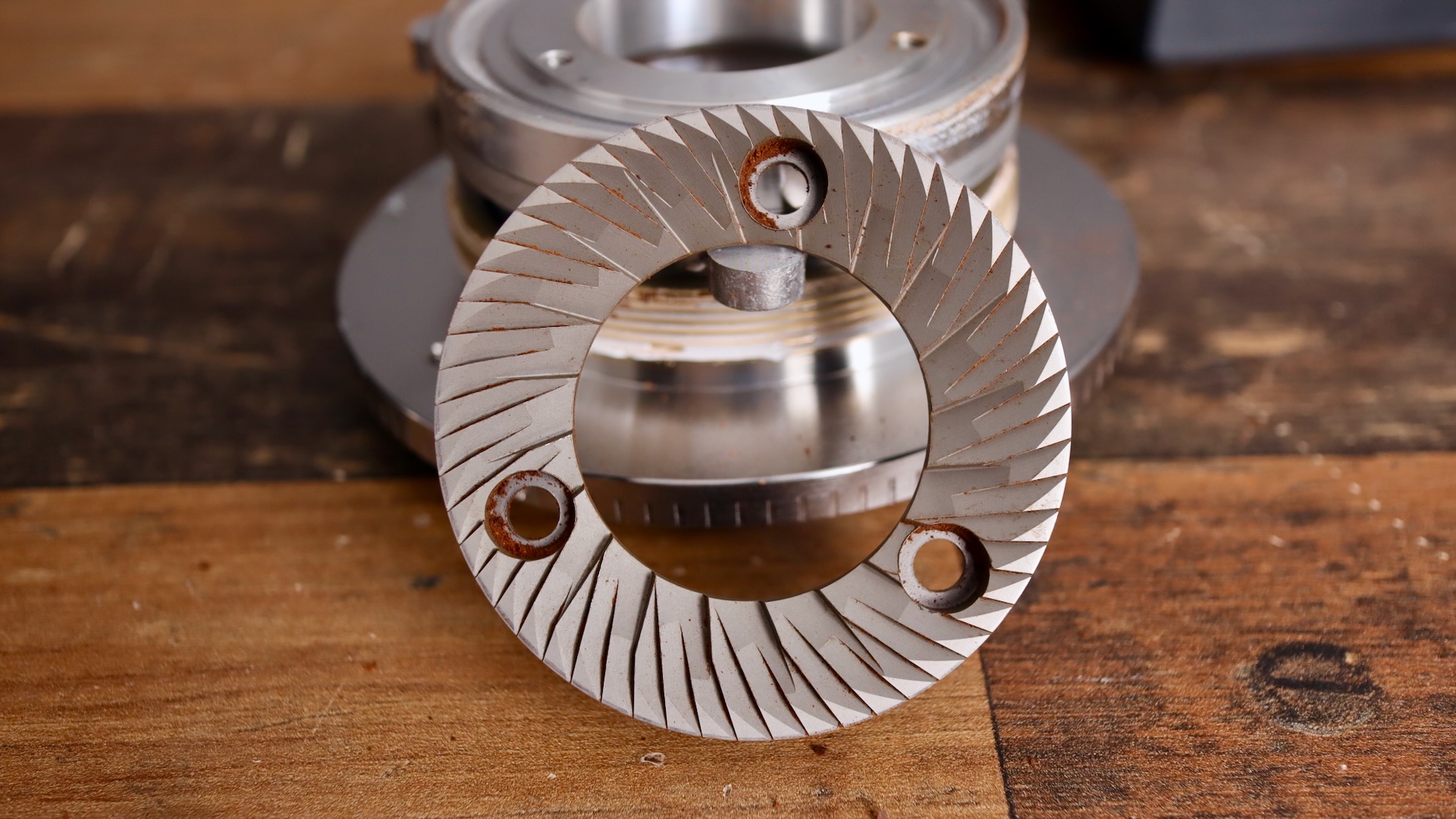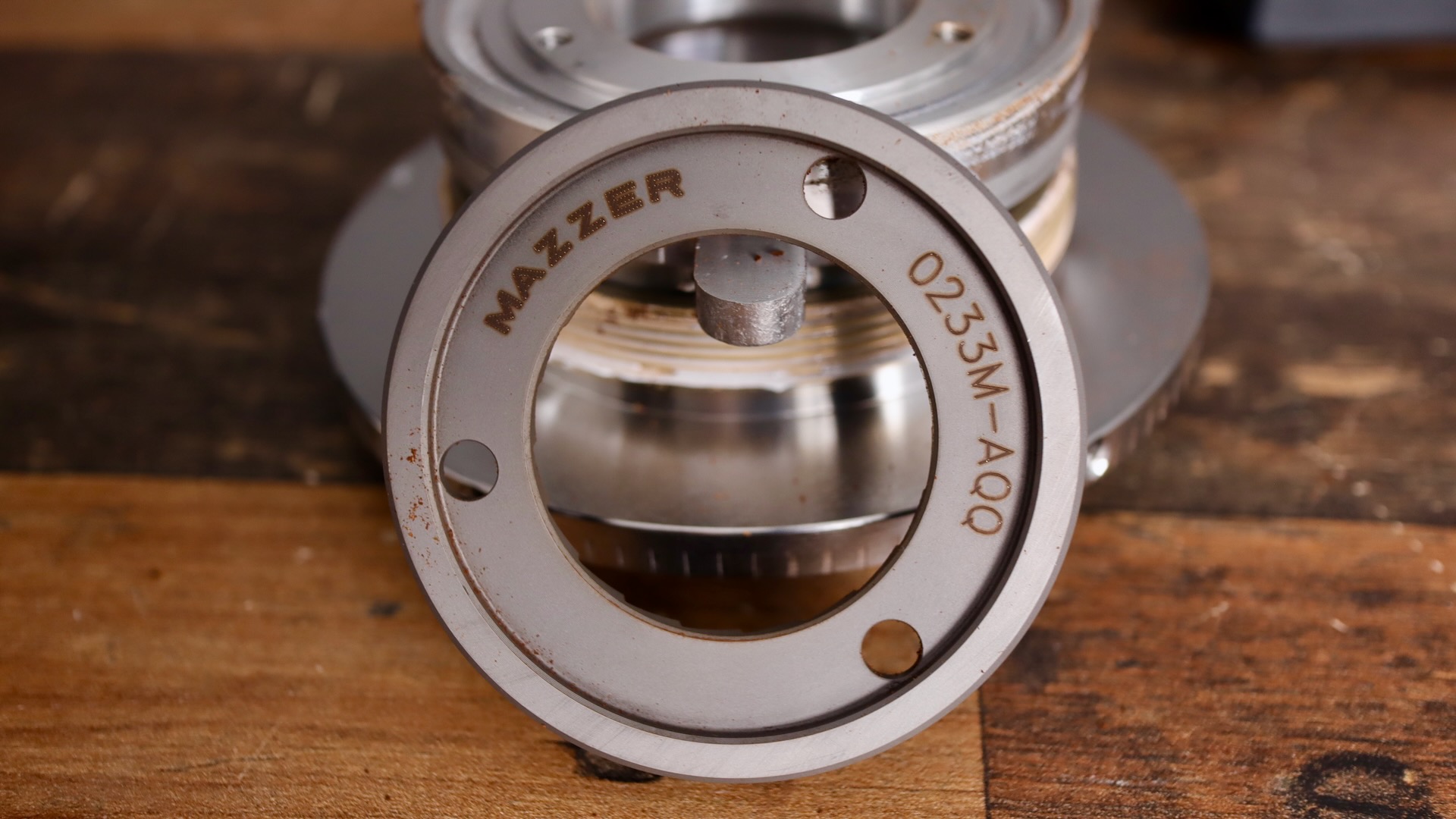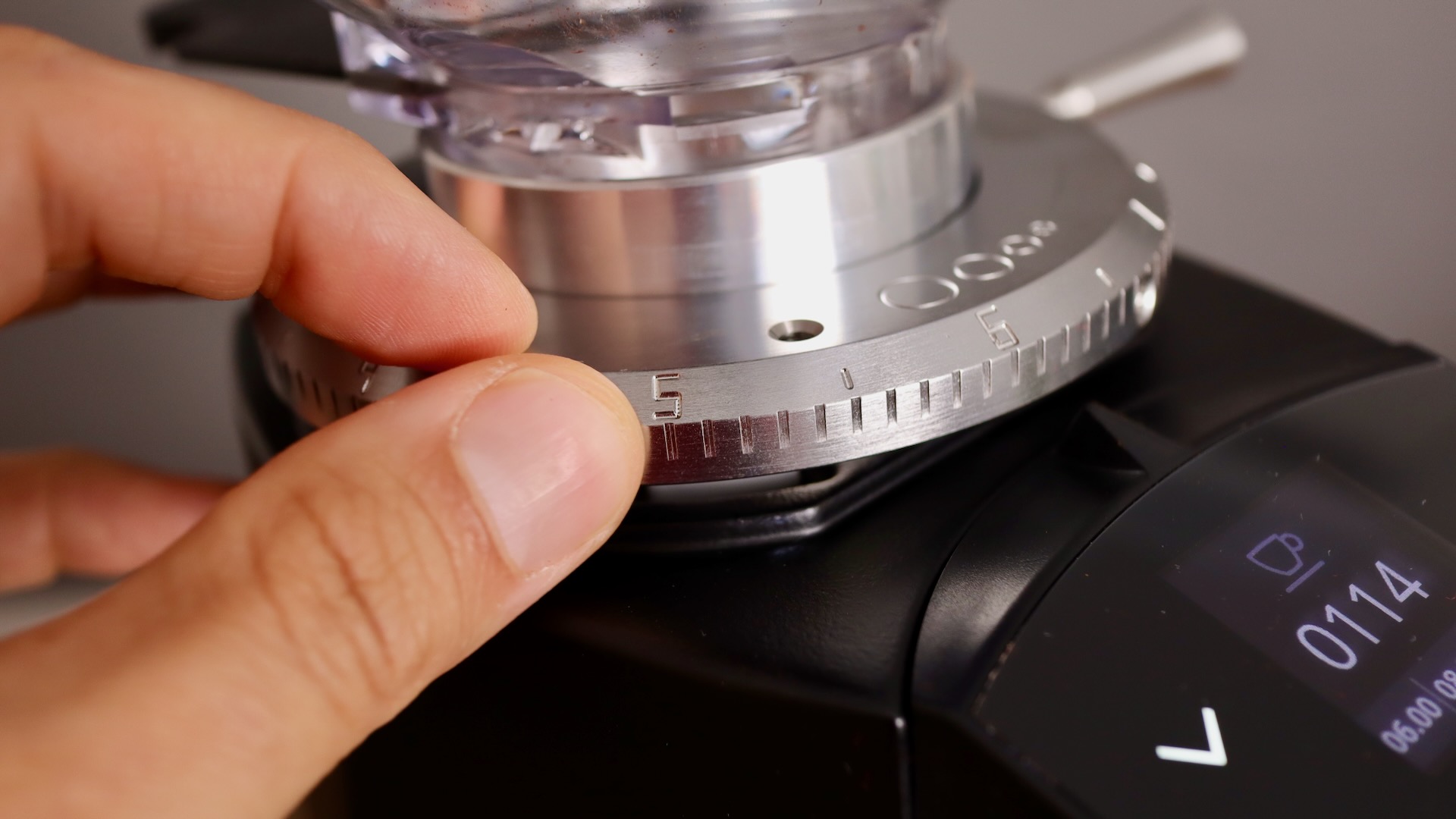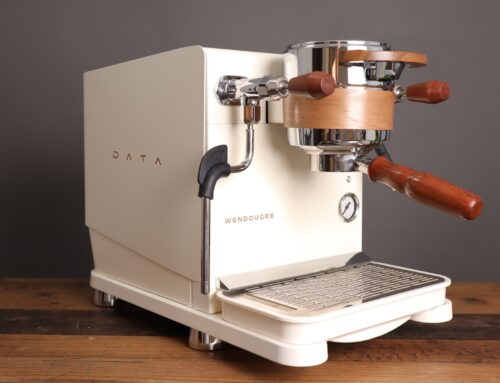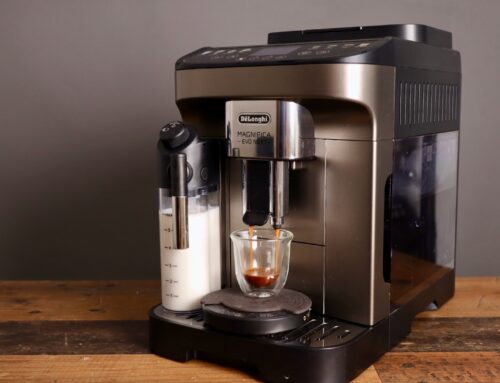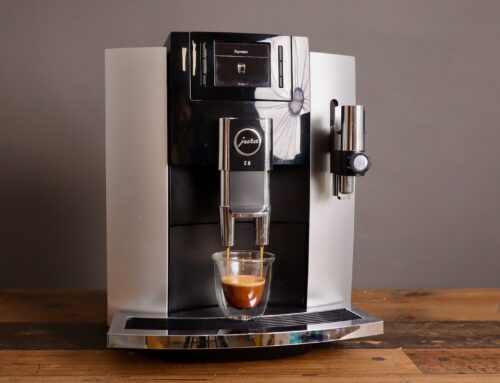Mazzer Mini – The Classic Grinder Released Anew
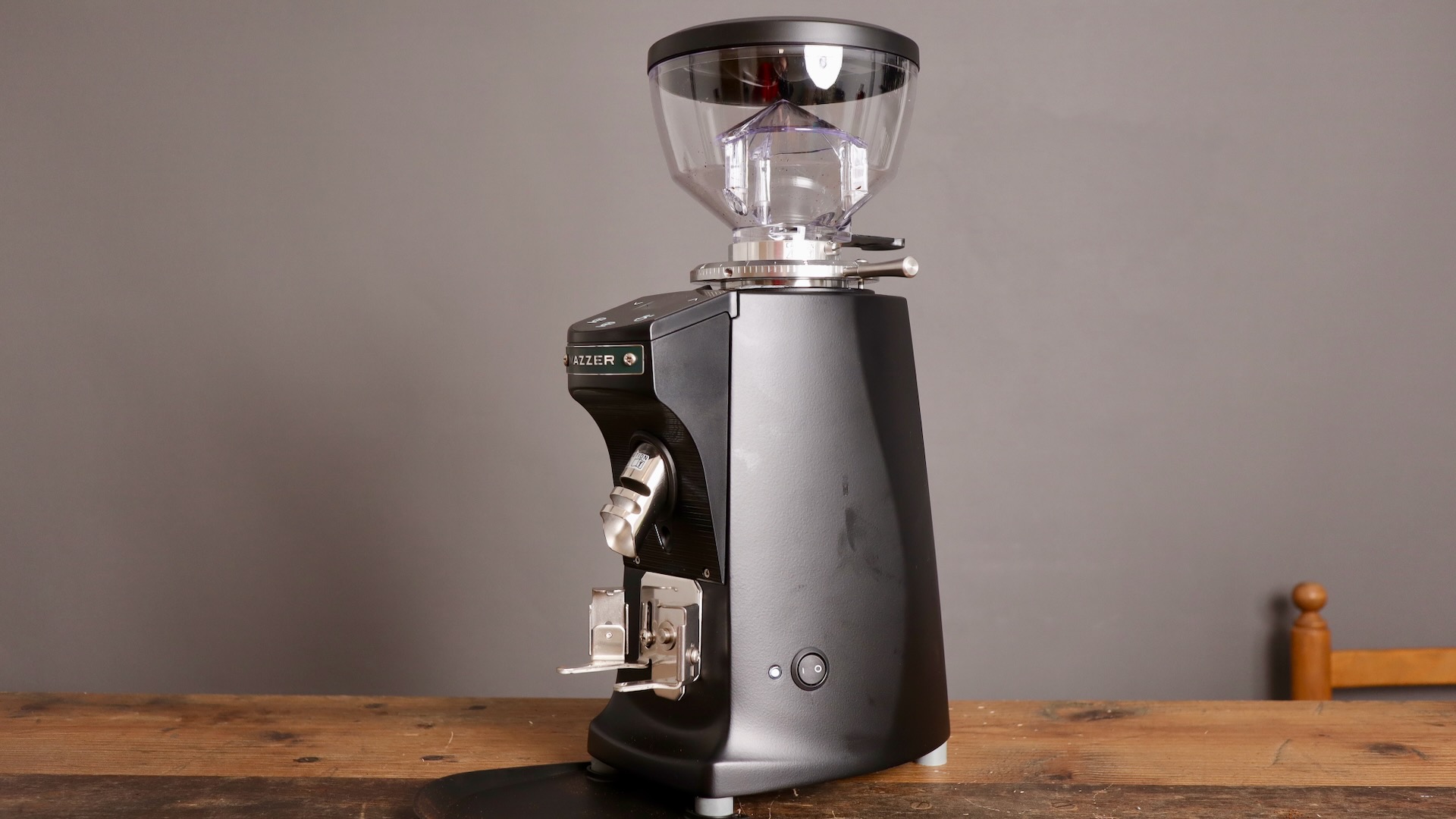
Introducing the new Mazzer Mini
The new Mazzer Mini is an 8.7 kg or 19 pound behemoth of a grinder, made out of die cast aluminum, bearing steel espresso burrs, has a 58mm portafilter holder, a newly designed exit chute, and a handy display.
Right off the bat, I like that Mazzer has merged the iconic body style of the Mini, with its beautiful S curve, and married it to a new chute and display.
The Looks and Features: Classic meets Modern
I don’t know about you guys, but I find the Mazzer line of grinders in a word, stunning. They are stately, eloquent, and feel like they belong on your kitchen countertop.
I really like the way the die cast aluminum body of the grinder has the integrated S-curve, that reflects light differently, from back to front. It also has a ton of heft, which I like. The hopper is a very nice plastic build, with a rubberized ring around the lid. On the bottom, you will see some thick light gray rubber feet.
One of the most significant updates of the Mini is its new display. It’s a capacitive touch display, meaning that there are no physical buttons.
Down and Up arrows adorn the coffee counter on the left and right, and below that are staggered buttons for 1 cup, 2 cup, and manual grinding. Dominating the main part of the display is the coffee counter, and below it are the times for the 1 and 2 cup options.
Just hold down on either the 1 or 2 cup buttons, to set the time of each. Just know that this machine has a 20/80s duty cycle, meaning that 20 seconds in the maximum you can grind.
The newly designed chute is very cool, certainly cooler than the old funnel they used to have. It’s a stainless steel sleeve, that juts outwards at a downward angle from the grinder.
While I did find a declumper in the grinder, I did not find any anti-static pins.
Moving down from the chute, there is a newly designed, and super robust portafilter holder. It comes with two different sets of prong lengths for holding different depths of portafilters. I do think though, that this is meant mainly for 58mm portafilters.
On the right side of the machine, you will see the toggle on and off switch, with its white LED indicator. It’s a good fit for this stately machine, and has good haptic feedback.
You’ll also notice the high quality paint job and rubber feet on the picture below.
Something I have always been drawn to, is the Mazzer logo. I’ve seen this at many a coffee shop, and in fact the first one that introduced me to espresso, Colectivo, uses an array of Mazzers.
On the bottom of the grinder, you’ll see that it’s made in Italy, namely in the area of Venice. It claims a 250 watt motor, although I’ve measured 300 watts under load. It also shows the duty cycle and a CE conformity label.
How are the 233M 64mm flat burrs?
The Mazzer Mini comes with a 64mm set of burrs, made with “bearing” steel. This steel should be known for its properties of hardness, wear resistance, and fatigue strength, according to what I could find online.
I’ve seasoned the burrs with about 1 kg of beans as I write this, and I have gotten mixed results, mainly due to dialing in issues.
When the beans are dialed in well, the burrs produced for me some delicious shots with good body and flavor depth, and they seemed slightly more refined and smooth than I remember with other grinders.
It should also be mentioned, that while the Mini comes with the 233M burrs, it can also house the k202D burrs, which are supposed to be aimed more for light roasts, balancing acidity and sweetness.
Dialing In and Use Case
While the burrs I think have some excellent potential, I do find dialing in quite difficult with the Mini. Just being honest. It’s hard to adjust the collar, and you have to use two hands to provide enough torque to turn it.
My first shots were way too coarse, then I adjusted slightly to a finer grind, and stalled my machine. The next shots also stalled my machine, until finally I found a spot on the collar that worked, about 1.5 ticks away from the reference point.
And that brings up my beef with the reference point. It’s not at zero on the dial. My reference point is at 5, which I have to remember. Another thing I don’t like is that you have to turn counter clockwise to get finer. This is the opposite of most grinders.
I also find that the grinder grinds a little different, based on how many beans are in the grinder. It’s slower obviously, as there’s fewer beans pushing down from above. It also seems to grind different as beans run out, resulting in faster shots. I think you have to adjust it finer as you run out of beans.
How is the retention?
Believe it or not, the Mini is not that bad for single dosing – at least when it comes to exchange. Generally, if I put 18.0 grams in, I get 17.8 grams out, if I let the machine run for 20 seconds, and another 10 seconds. Eventually, the pushers on the side of the lower burr will get most of the coffee grounds out.
BUT, it doesn’t get them all out. In fact, I have found retention to be around 4 grams, if you take the grinder apart and pour out the remaining coffee grounds.
So how does the Mini perform for Espresso and Pour Over?
So far, I really like the grinder for espresso, but only when dialed in. It’s not easy to switch beans though. I will have to report more, as I use the grinder more.
As for pour over, I think that’s a moot point. If you buy this for espresso, you’ll likely just dump your beans in, and you won’t have much chance to use this with other beans for pour over.
I feel like this grinder is to be dedicated to either espresso or pour over, but it’s designed for espresso.
I will add more here, if I get enough time (the grinder is on loan), to test it for pourover.
Pros and Cons of the Mini?
I think due to its €850 price point, people will be more critical of this grinder, so lets talk about its pros and cons.
Pros:
- Extremely solid die-cast aluminum build
- Beautiful, classic, and stately design
- Improved grounds chute
- Nice display
- Very nice for espresso, imho.
Cons
- Kind of expensive
- High retention
- Dialing in is a pain
- Grinding amounts seem to deviate
Specifications of the Mini:
– Dimensions: 160 x 200 x 425 mm
– 64mm bearing steel burrs
– Weight: 8.7 kg
– 300 watt motor
– Build Materials: die-cast aluminum body, steel burrs
– 2 year warranty in the EU
– Country of Origin: Italy
